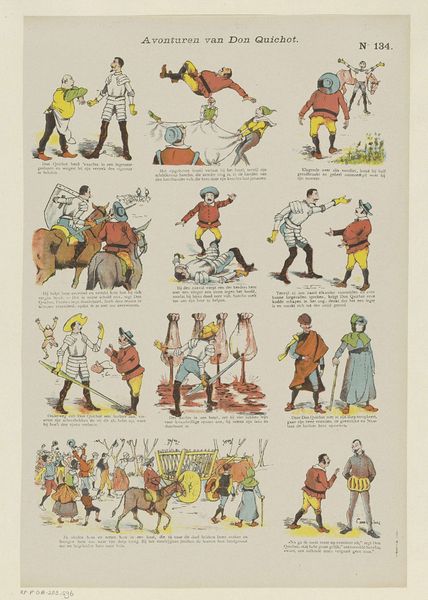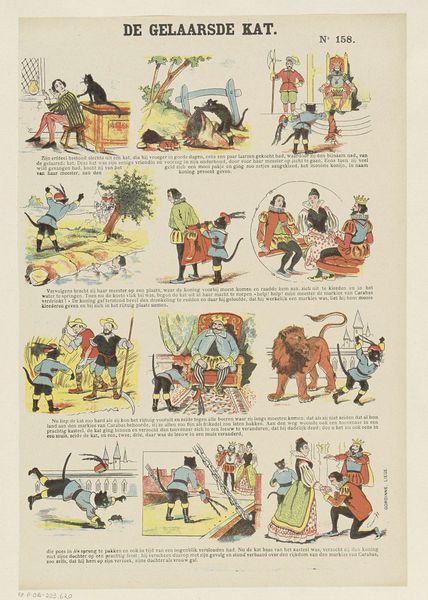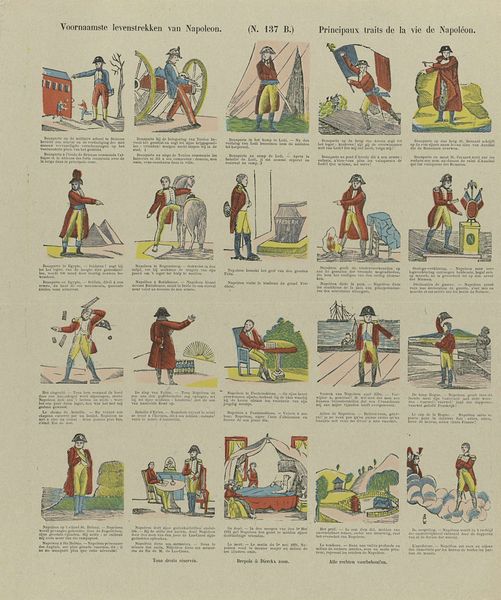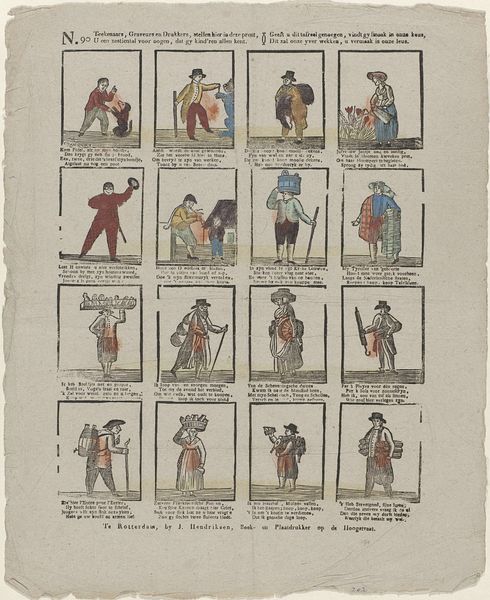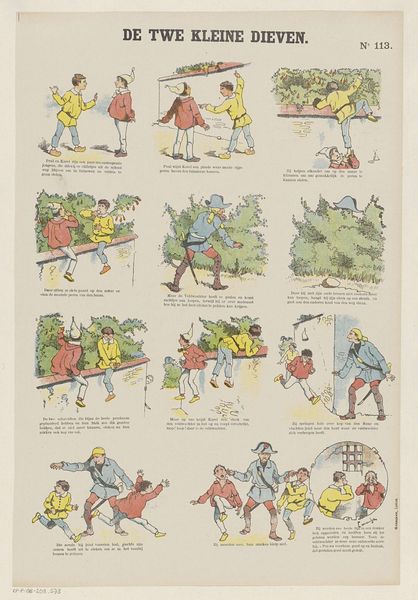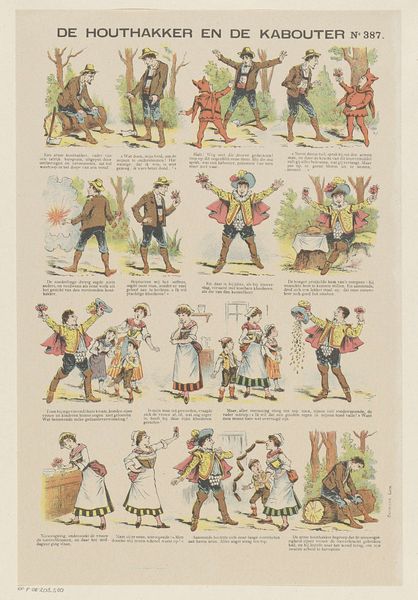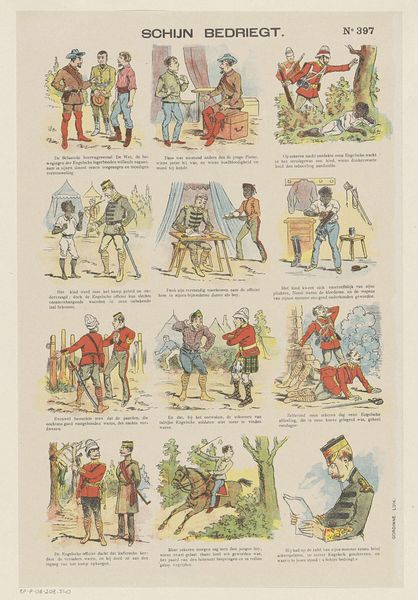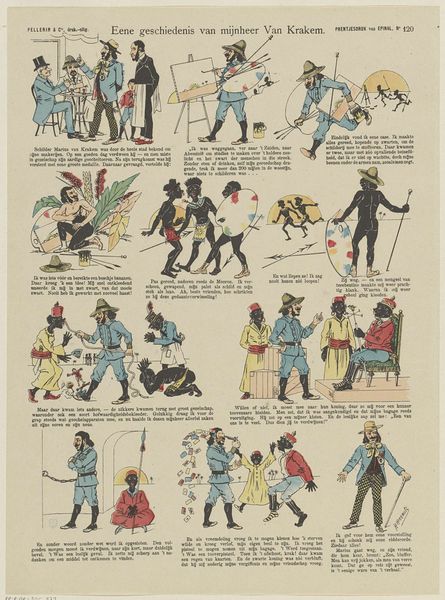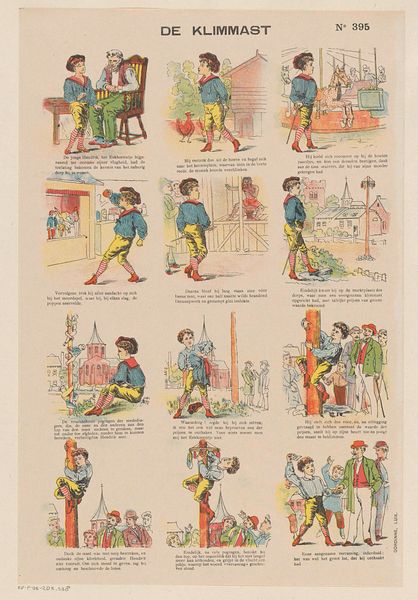
#
comic strip sketch
#
aged paper
# print
#
caricature
#
sketch book
#
traditional media
#
personal sketchbook
#
sketchwork
#
comic
#
sketchbook drawing
#
genre-painting
#
storyboard and sketchbook work
#
cartoon carciture
#
sketchbook art
Dimensions: height 399 mm, width 271 mm
Copyright: Rijks Museum: Open Domain
Curator: This is "De oppasser van den kapitein," dating from 1894 to 1959, currently held at the Rijksmuseum. It seems to be a print of a comic strip sketch. What's your initial take on it? Editor: It strikes me as lighthearted, yet somewhat cynical. The drawing style is simple, almost cartoonish, and there’s a clear narrative laid out across the page. But looking closer, the aged paper tells a story itself. It speaks of time, preservation, and maybe even a touch of neglect. Curator: Indeed. We're looking at a genre painting here, cleverly disguised as a comic. Notice how the artist uses the format of the comic strip, then very popular, to tell a visual story of class and social interaction. The figure depicted in each frame appears to be engaged in a transaction with another character. Do you think that material exchange impacts the story being told? Editor: Absolutely, there is an examination of labor here, a sort of commentary on the duties relegated to those who work for a wage. In the frames, our main figure engages in a series of activities like lugging packages or bringing drinks that feel rooted in working life. Even the sketched aesthetic seems aligned with an artistic product born out of practical circumstances rather than luxury. Curator: Precisely. Considering the date range of its creation, from 1894 to 1959, this artwork likely reflects changing social dynamics across two world wars. I think this is an important reminder to contextualize our viewing. I can not help but question: Does the work mock him or present an empathy for service, for "dirty work"? Editor: I think the question is a strength of the piece. Looking at the actual physical marks of the printing process brings another element in for me. The limitations inherent in printmaking surely had their effects on the artist's style here and perhaps forced them to adopt a simpler means to reproduce each panel of the captain's errands. Curator: Interesting how we view it differently through our respective lenses. What strikes me is the recurring role this 'oppasser' has within the structure of society. How these works were distributed would also say something important about the relationship of Dutch society and caricature. It appears deceptively simplistic, but underneath lies societal observations worthy of some examination. Editor: Definitely! Focusing on its form has heightened my attention to how it reflects the social structures that produced the materials and techniques it shows. It gives me a whole new understanding to bring forward, for instance, I would consider labor more when I engage with artwork again. Curator: For me, I leave with an inquiry, one rooted in further examination: what role might the piece had played in broader dialogues regarding duty? The print does well to continue speaking to such contemporary struggles in class, duty, and labor through material production.
Comments
No comments
Be the first to comment and join the conversation on the ultimate creative platform.
